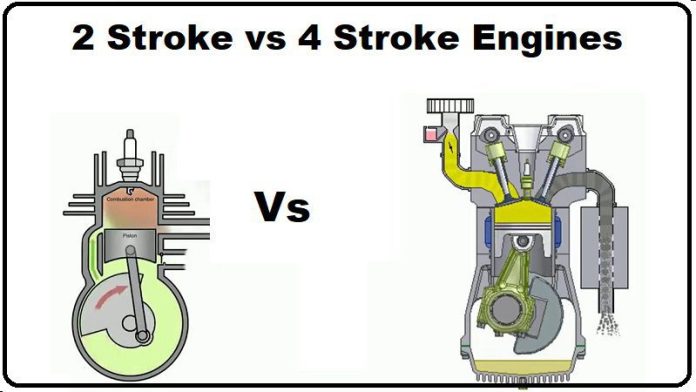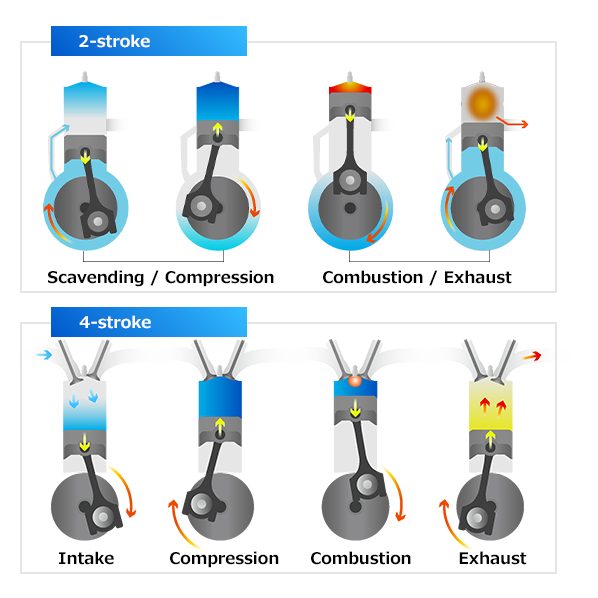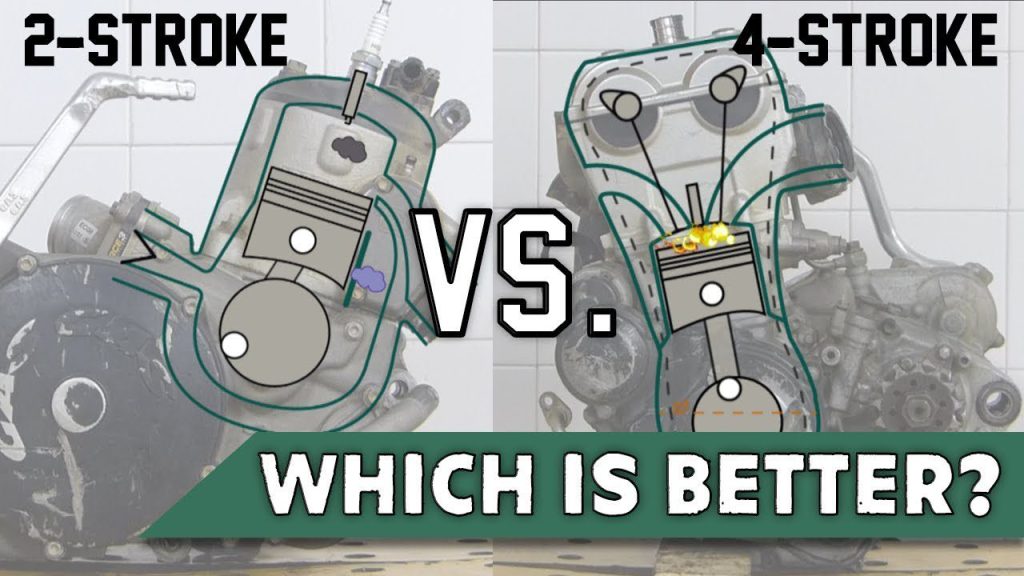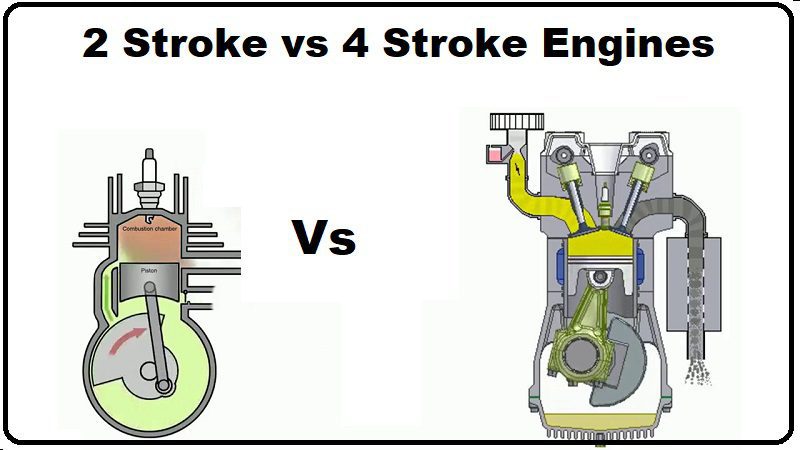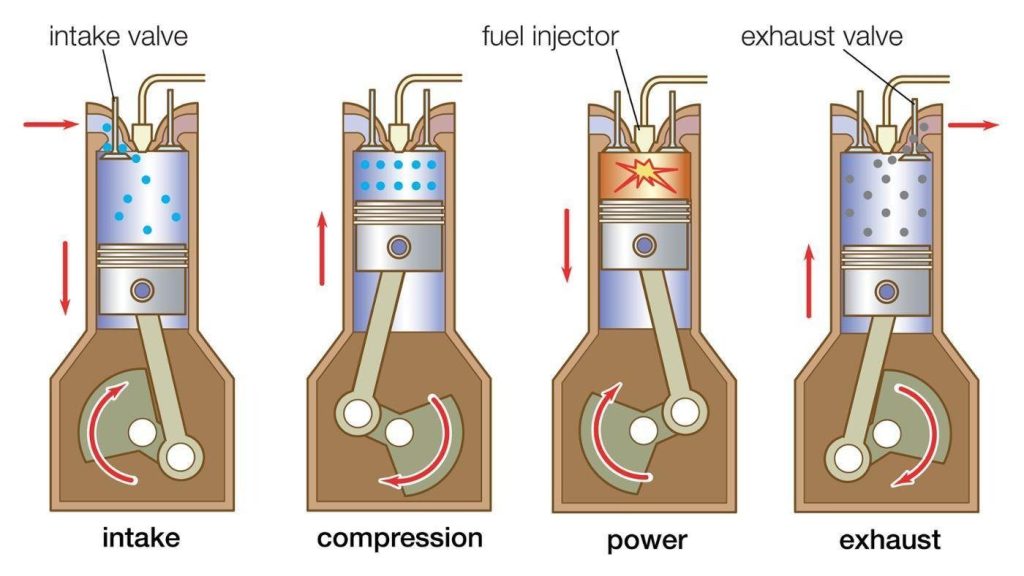Curious to know why 2-stroke engines are often lighter on the wallet compared to their 4-stroke counterparts? Well, buckle up as we take you on a journey to uncover the secret behind this cost differential. In this article, we explore the factors that contribute to the affordability of 2-stroke engines and shed light on why they might be the more budget-friendly option. Get ready to gain a new perspective on engine economics!
Reasons for Lower Cost of 2-stroke Engines
Less Complex Design
One of the main reasons why 2-stroke engines are cheaper than 4-stroke engines is their less complex design. Unlike their 4-stroke counterparts, 2-stroke engines do not have valves or a separate lubrication system. This simplicity in design results in lower manufacturing and maintenance costs.
Fewer Parts
Another factor contributing to the lower cost of 2-stroke engines is the reduced number of parts involved. With fewer components, the manufacturing process becomes more streamlined, leading to lower production costs. Additionally, the simplicity of the design makes it easier to assemble and maintain these engines, further reducing labor costs.
Lower Manufacturing Costs
The manufacturing process for 2-stroke engines is generally less complicated and time-consuming. This translates to lower manufacturing costs for these engines compared to 4-stroke engines. The reduced complexity of the design and the fewer parts required also contribute to the overall lower manufacturing costs.
Less Expensive Materials
Due to their simpler design and fewer parts, 2-stroke engines often require less expensive materials for their construction. This results in a cost savings as less expensive materials are typically more readily available and do not require extensive processing or refinement. These lower material costs contribute to the overall affordability of 2-stroke engines.
Lower Labor Costs
As mentioned earlier, the simplicity of 2-stroke engines leads to easier assembly and maintenance. This simplification reduces the amount of labor required during manufacturing and upkeep. With less complex procedures involved, labor costs are significantly diminished, making 2-stroke engines more economically feasible.
Economies of Scale
Another factor that contributes to the lower cost of 2-stroke engines is the concept of economies of scale. Due to their long-standing presence in the market and widespread use, 2-stroke engines are produced on a larger scale compared to newer technologies. This increased production volume allows for greater efficiency in manufacturing and distribution, further driving down costs.
Fuel Efficiency and Performance Trade-off
Higher Fuel Consumption
While 2-stroke engines may have certain cost advantages, they often come with a trade-off in terms of fuel consumption. Due to their design, 2-stroke engines tend to have higher fuel consumption rates compared to 4-stroke engines. This means that they burn more fuel to generate the same amount of power, resulting in increased fuel costs over time.
Less Power Output
In addition to higher fuel consumption, 2-stroke engines generally have lower power output compared to 4-stroke engines. This lower power output can be a drawback in applications that require high performance or heavy-duty tasks. While 2-stroke engines may be suitable for smaller machinery or recreational vehicles, their limited power can impact their cost-effectiveness in certain industries or situations.
This image is property of global.yamaha-motor.com.
Regulatory Factors
Emission Regulations
One of the reasons why 2-stroke engines may be cheaper is that they are not subject to the same strict emission regulations as 4-stroke engines. 2-stroke engines tend to produce more pollution and emissions due to their combustion process. While this may be disadvantageous from an environmental standpoint, it can result in lower manufacturing costs as manufacturers may not need to invest in expensive emission control technologies.
Sound Regulations
Similarly, 2-stroke engines are generally subject to less stringent sound regulations compared to 4-stroke engines. The inherent design and operation of 2-stroke engines often result in higher noise levels. While this may not be ideal in certain environments, it can be a cost advantage as manufacturers are not required to implement extensive noise reduction measures.
Maintenance and Operating Costs
Lower Oil Cost
One of the cost benefits of 2-stroke engines is their lower oil cost. Unlike 4-stroke engines, which require separate oil lubrication systems, 2-stroke engines use oil mixed directly with the fuel. This means that owners of 2-stroke engines do not need to purchase separate engine oil, resulting in cost savings over time.
Simpler Maintenance
The simplicity of 2-stroke engines translates to easier maintenance procedures and reduced reliance on expensive specialized tools. The absence of valves and separate lubrication systems simplifies maintenance tasks, making them more accessible and less costly. Additionally, the reduced number of parts in a 2-stroke engine results in fewer components that may require repairs or replacement, further contributing to the lower maintenance costs.
This image is property of i.ytimg.com.
Limited Application Range
Less Applicable in Certain Machinery
While 2-stroke engines have their advantages, they have a limited application range compared to 4-stroke engines. Their lower power output and higher fuel consumption make them less suitable for heavy-duty machinery or applications that require consistent high performance. As a result, their lower cost may not justify their use in certain industries or scenarios where reliability and power are crucial factors.
Historical Factors
Early Development
2-stroke engines have a long history of development and refinement, dating back to its invention in the early 19th century. The early development of this engine type paved the way for the widespread adoption and manufacturing of 2-stroke engines. The accumulated knowledge and experience over the years have contributed to the cost-effective production of these engines.
Widespread Adoption
The popularity and widespread use of 2-stroke engines have played a significant role in reducing their cost. Due to their simplicity and affordability, 2-stroke engines have found applications in various industries, including automotive, marine, and recreational vehicles. The high demand for 2-stroke engines has allowed manufacturers to achieve economies of scale, resulting in cost savings that are passed onto consumers.
Legacy Equipment
The presence of legacy equipment already running on 2-stroke engines also contributes to their lower cost. Many industries and businesses have already invested in machinery and equipment that utilize 2-stroke engines. Upgrading to newer technologies or engine types can be costly and impractical, especially if the existing equipment is still functional. The availability and cost-effectiveness of 2-stroke engines make them a preferred choice for maintaining and repairing legacy equipment.
This image is property of www.electronicshub.org.
Changing Industry Trends
Increasing Preference for 4-stroke Engine
Despite the historical advantages and lower cost of 2-stroke engines, the market is witnessing a shift towards 4-stroke engine technologies. This preference is primarily driven by the increasing focus on environmental regulations and fuel efficiency. 4-stroke engines tend to have lower emissions and better fuel economy, making them more appealing for many applications. This changing trend may affect the long-term cost competitiveness of 2-stroke engines as demand dwindles.
Overall Cost Considerations
Purchase Cost vs. Operating Cost
When considering the overall cost of an engine, it is essential to evaluate both the purchase cost and the operating cost. While 2-stroke engines may have an advantage in terms of lower purchase costs, the higher fuel consumption and maintenance requirements can increase the operating costs over time. For some industries or applications, the lower purchase cost may be outweighed by the long-term expenses associated with fuel consumption, maintenance, and potential early replacement.
This image is property of viden.io.
Future Outlook
Advancements in 2-stroke Technology
As technology continues to advance, there is potential for improvements in 2-stroke engine design and efficiency. Manufacturers are investing in research and development to enhance the performance and fuel efficiency of 2-stroke engines. If successful, these advancements may result in more cost-competitive 2-stroke engines that can rival the efficiency of 4-stroke engines while maintaining their affordability.
Demand for Cleaner Engines
The increasing global focus on environmental sustainability and emission control is likely to impact the future outlook of 2-stroke engines. As emission regulations become stricter, the cost advantage of 2-stroke engines may diminish if manufacturers are required to invest in expensive emission control technologies. The demand for cleaner engines may also drive the market towards more fuel-efficient and environmentally friendly alternatives, potentially reducing the appeal and cost benefits of 2-stroke engines.
Conclusion
In conclusion, there are various factors that contribute to the lower cost of 2-stroke engines. Their less complex design, fewer parts, lower manufacturing costs, and less expensive materials all contribute to their affordability. Lower labor costs and economies of scale further add to the cost advantages of 2-stroke engines. However, these advantages come with trade-offs, such as higher fuel consumption and lower power output. Regulatory factors, maintenance and operating costs, limited application range, historical factors, and changing industry trends also impact the cost competitiveness of 2-stroke engines. It is essential for consumers and businesses to consider both the purchase cost and operating cost when evaluating the suitability and long-term affordability of 2-stroke engines. As the industry evolves and environmental concerns become more prominent, the future outlook for 2-stroke engines may be influenced by advancements in technology and increasing demand for cleaner engines.
This image is property of cdn2.hubspot.net.

